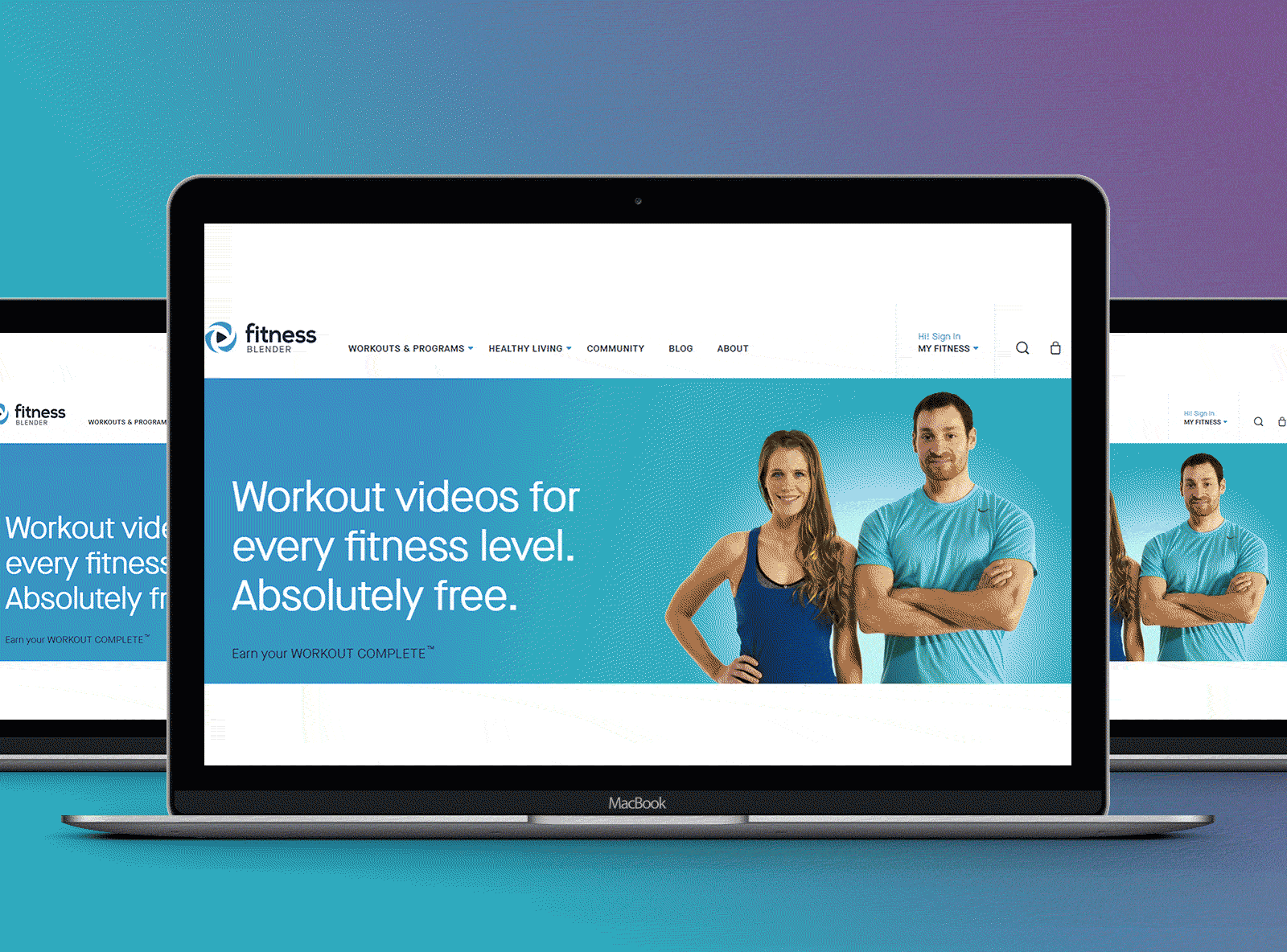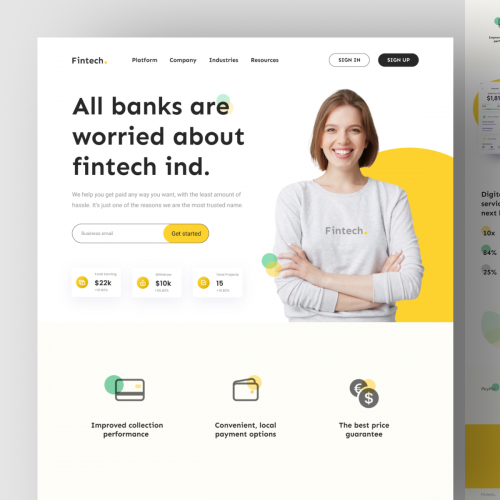Leading Devices for Enhancing Your Website Design Process
The Power of User-Centered Website Layout in Growing Your Online Audience
Effective layout concepts-- such as instinctive navigating and access-- are crucial in cultivating customer fulfillment and commitment. What strategies can companies take on to ensure their layouts resonate with users and inevitably drive development?
Comprehending User-Centered Layout
User-Centered Style (UCD) is an essential approach to internet site development that prioritizes the needs, preferences, and actions of end customers throughout the style procedure. This methodology emphasizes understanding individuals deeply-- through research study techniques such as interviews, surveys, and functionality screening-- to produce an internet site that resonates with them. By integrating individual responses at every stage, developers can make certain that the end product straightens very closely with user expectations.
UCD promotes repetitive design, where prototypes are evaluated and fine-tuned based upon individual communications and experiences. This cycle not just enhances usability however also fosters a sense of possession among users, as they feel their input is valued and impactful. In addition, UCD aids recognize possible obstacles and pain factors in the user journey, enabling designers to address these obstacles proactively.
Ultimately, accepting UCD causes sites that are extra instinctive, interesting, and reliable. By putting users at the facility of the style procedure, organizations can produce digital experiences that not just bring in however also keep their target audience, driving greater fulfillment and commitment. In a competitive online landscape, this technique is important for achieving sustained success.
Trick Concepts of Customer Experience
A successful user experience (UX) pivots on numerous crucial principles that direct the design procedure and improve communication between individuals and the internet site. Most importantly, use is paramount; the web site must be instinctive, allowing customers to navigate quickly and locate info promptly. This consists of clear labeling and a logical framework that lessens cognitive lots.
Secondly, accessibility plays an important function in guaranteeing that all users, no matter of their impairments or abilities, can successfully engage with the site. Including alt text for images, key-board navigating, and display visitor compatibility cultivates inclusivity.
Consistency is one more important principle. A natural design language, from color schemes to typography, aids users build knowledge and depend on with the internet site (Website Design). It also reinforces brand identification
Furthermore, comments systems are vital. Individuals must get clear and immediate actions to their activities, whether via aesthetic signs or confirmation messages, which improves their self-confidence in browsing the site.
Lastly, mobile responsiveness can not be overlooked. With a boosting number of individuals accessing websites using mobile gadgets, a design that adjusts seamlessly to numerous screen sizes is crucial for preserving a favorable user experience.

Advantages for Online Involvement
Efficient online engagement uses countless advantages that can substantially improve a website's total performance - Website Design. By cultivating significant communications in between users and the website, companies can grow a dedicated audience that returns with uniformity. Engaged individuals are more probable to share content, thus increasing natural reach and drawing in brand-new site visitors via word-of-mouth promo
Boosted online interaction likewise causes boosted user contentment. When customers find an internet site that reverberates with their demands, they are much more likely to explore its offerings extensively, which can cause higher conversion rates. Additionally, engaging content motivates users to invest even more time on the website, minimizing bounce prices and favorably affecting online search engine ranking formulas.
Moreover, effective interaction supplies invaluable insights into user choices and actions (Website Design). By assessing individual interactions, organizations can tailor their material and layout methods to satisfy the progressing assumptions of their audience. This flexible method not just increases involvement but additionally reinforces the brand's track record as user-centric and receptive
Ultimately, prioritizing on the internet involvement through user-centered layout produces a thriving ecosystem where both the audience and the company benefit, bring about continual development and success in the digital landscape.

Methods for Efficient Layout
To make the most of the advantages of online engagement, utilizing certain methods in internet site style is extremely important. User-friendly navigating is vital; customers must conveniently find details without confusion. A well-structured menu, clear tags, and a rational power structure improve the user experience and lower bounce prices.
2nd, receptive layout is critical in today's multi-device environment. Making certain that a web site additional reading adapts effortlessly to numerous screen sizes promotes availability, thereby fitting a broader target market. This adaptability not just boosts customer complete satisfaction yet additionally positively impacts online search engine positions.
Third, the usage of aesthetic power structure guides users' attention to necessary components, such as contact us to activity (CTAs) visit this page Using contrasting shades, differing font dimensions, and calculated spacing can successfully direct individuals towards desired actions, facilitating better communication.
Additionally, implementing consistent branding throughout all web pages builds depend on and recognition. A natural shade typography, imagery, and system enhance brand identity and create a professional look.
Last but not least, enhancing loading speeds is essential. Individuals are much less most likely to involve with a slow-loading site, making performance optimization a critical element of reliable style. By integrating these methods, web site developers can boost customer experience and ultimately grow their on-line target market.
Real-World Success Stories
Success stories in user-centered site layout show the tangible benefits of focusing on individual experience. As a result, they experienced a 250% boost in on-line contributions, showing exactly how an intuitive design can drive individual interaction and assistance.
An additional compelling instance is that of Airbnb, which utilized user-centered layout principles to improve their reservation process. By simplifying the customer trip and incorporating personalized suggestions, they significantly minimized website abandonment rates. This emphasis on individual experience contributed to a revenue development of over 70% in a single year, highlighting the correlation between properly designed interfaces and economic success.
Moreover, the e-commerce see this titan, ASOS, carried out individual screening to refine their mobile application. By dealing with customer pain points, they attained an impressive 30% boost in mobile sales. These examples highlight that buying user-centered style not only improves user contentment however also drives substantial business outcomes, reinforcing the important role of individual experience in accomplishing online growth.
Verdict
To conclude, user-centered website layout functions as an essential approach for boosting online target market engagement. By focusing on customer demands and choices, companies can produce obtainable and intuitive digital experiences that promote commitment and drive conversions. The combination of customer comments throughout the design process not only reduces bounce prices yet also encourages expedition. Ultimately, adopting effective user-centered design concepts can significantly add to a company's success in an affordable electronic landscape.
User-Centered Style (UCD) is a fundamental approach to website growth that prioritizes the requirements, choices, and actions of end individuals throughout the layout procedure. By incorporating individual comments at every stage, designers can make sure that the last item aligns very closely with customer expectations.
A successful user experience (UX) hinges on numerous key concepts that guide the design procedure and improve interaction between customers and the internet site.Success stories in user-centered site style illustrate the tangible benefits of focusing on individual experience. These examples highlight that investing in user-centered design not only improves individual fulfillment however additionally drives substantial business results, reinforcing the crucial duty of user experience in accomplishing on-line growth.